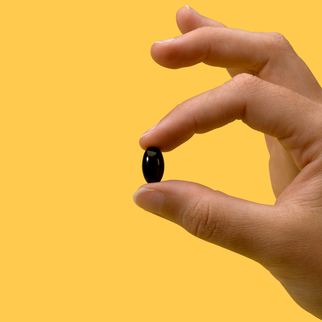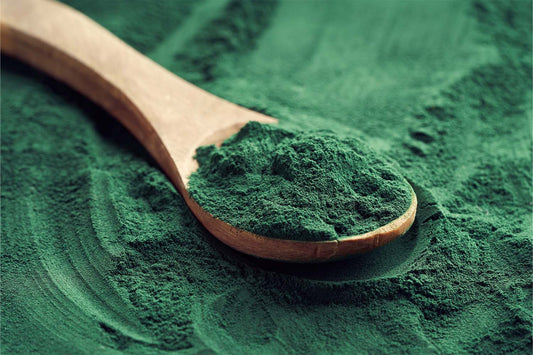As you push your body through intense workouts, you're also pushing the limits of your muscle capacity and endurance. However, achieving peak performance isn't just about how well you train — it's also about how effectively you recover.
One popular method of recovery that's popping up on everyone's radar — from weekend warriors to professional athletes — is the ice bath. Known for its rejuvenating properties, ice baths have been sweeping across social media feeds and locker rooms alike, gaining traction not only as a trendy post-workout routine but as a scientifically backed recovery strategy.
In this article, we'll delve deeper into why cold baths are making waves in sports medicine and how they can become an integral part of your fitness journey, offering benefits that extend from the physiological to the psychological.
What's the Science Behind Ice Baths?
The science of ice baths revolves around the idea of cold water immersion and its impact on your physiological systems. When your body is submerged in the chilly water, several things happen almost instantaneously — your blood vessels constrict, your blood flow shifts, and your nervous system activates.
The effects of this vasoconstriction help soothe irritated or tense muscle tissues, effectively flushing out waste products like lactic acid. This helps speed up recovery and minimize muscle soreness, helping you feel ready for your next training session much faster.
How Do Professional Athletes Use Ice Baths?
The use of ice baths in athletic training isn't just a fad; it's backed by some of the biggest names in sports. Take Wim Hof, for example, popularly known as the "Iceman" who has not only endorsed but also seemingly defied science with his extreme cold exposure practices.
By following carefully curated routines that include cold water immersion, athletes provide a roadmap for anyone looking to tap into the same physical and psychological benefits.
5 Benefits of Ice Baths
Before taking the literal plunge into icy waters, let's dip our toes into the wide variety of health benefits that ice baths offer.
Here’s a closer look at the various ways ice baths can revolutionize your post-workout recovery and overall wellness:
1. Reduction of Muscle Soreness
Ever feel worse for the wear after an intense workout built around strength training? That feeling is what exercise enthusiasts and healthcare professionals often refer to as delayed onset muscle soreness (DOMS).
While DOMS is a natural response to a hard workout, it can be discouraging, to say the least. Fortunately, ice baths are a powerful tool for fighting muscle soreness.
The main reason is that your blood vessels constrict whenever you submerge yourself in cold water. This constriction can help limit the buildup of lactic acid in your muscles. While lactic acid doesn’t cause sore muscles, high levels of lactic acid can result in serious problems.
The cold temperatures also help numb nerve endings, offering immediate relief from discomfort in the short term. This effect on muscle soreness can significantly accelerate your active recovery process, ensuring that you're ready for your next training session without feeling like you're dragging your feet — literally.
2. Improved Blood Flow
Did you know that cold water immersion could be a booster for your circulatory system? As we mentioned before, submerging in an ice bath makes your blood vessels constrict, reducing blood flow to your extremities and increasing flow to your core.
Once you step out, the sudden change to a warmer environment causes your vessels to dilate, triggering a rush of oxygen-rich blood throughout your entire body. This helps flush out waste products and delivers essential nutrients to your muscles, expediting the recovery process post-exercise.
3. Potential for Weight Loss
Believe it or not, there is also a potential weight loss advantage to ice baths. When your body is exposed to cold temperatures, it has to work harder to maintain its core temperature. This effort boosts your metabolic rate, potentially aiding in weight loss.
While ice baths are not a replacement for a well-rounded diet and regular exercise, they can serve as a supplemental strategy for those interested in shedding some extra pounds.
4. Regulation of Body Temperature
Intense exercise can raise your body temperature to higher levels, potentially causing discomfort and slowing down your recovery. An ice bath or just a cold shower can help bring your core temperature back to normal levels quickly.
By helping to regulate body temperature, you can ensure that your muscles and cardiovascular system recover under optimal conditions, setting the stage for better performance in your next workout.
5. Mental Health Enhancement
Lastly, let's not forget the significant impact of ice baths on mental health. It's not just your muscles that benefit from the freezing dip; your nervous system does too. The shock of cold water activates your sympathetic nervous system, which leads to the release of adrenaline. This helps you feel invigorated and alert, effectively countering post-workout fatigue.
The rush of cold water not only stimulates you, but also leads to the release of endorphins, the body's natural "feel-good" hormones. This mood boost is particularly helpful after a stressful or challenging day, making it another compelling reason to incorporate ice baths into your post-workout routine.
What Should You Know Before Taking an Ice Bath?
The first thing you need to know is the ideal water temperature for your ice bath. Experts recommend a water temperature range between 50 and 59 degrees Fahrenheit. A temperature below this range could be excessively harsh and potentially dangerous, while anything above it may not provide the benefits you're seeking.
Time duration is the next crucial factor. You shouldn't stay submerged in the cold water for more than 15-20 minutes, as prolonged exposure could lead to hypothermia or other adverse health conditions. Also, it's crucial to pay attention to how your body is reacting during this time. If you start to feel numb, lightheaded, or just downright uncomfortable, don't push it. Listen to your body; it knows when it's time to get out.
Additionally, it might be helpful to have someone nearby for your first few attempts, both for emotional support and as a precautionary measure. Lastly, consider easing into the practice. Instead of going full-in with the coldest temperature, you might start with a slightly warmer bath and work your way down as your body gets acclimated.
What Are Some Alternatives to Ice Baths?
While ice baths come with a host of advantages, they're not the end-all-be-all of post-workout recovery. Here are some other effective methods you can incorporate into your recovery routine:
Cool Downs
Never underestimate the power of a good cool-down session after an intense workout. Simple exercises like walking or slow cycling can help your heart rate gradually return to its normal state and reduce muscle stiffness.
Stretching
Stretching is a time-tested and straightforward method for improving flexibility and aiding in muscle recovery. Incorporating a stretching routine post-workout can go a long way in reducing muscle soreness and enhancing overall performance.
Foam Rolling
Foam rolling is another excellent recovery technique. The act of rolling specific muscle groups over a foam roller helps break up muscle knots, increase blood flow, and assist in muscle recovery, much like a deep-tissue massage.
Balanced Diet
Nutrition should never be overlooked in any recovery regimen. Make sure you consume proteins, healthy fats, and other essential nutrients to expedite the healing process and reduce tension.
Why not add a plant-based touch to your recovery routine? iwi life’s sustainably farmed, algae-derived omega-3 supplements offer a well-rounded approach to active recovery and overall wellness. Our supplements are particularly beneficial in supporting joint health and soothing tension, perfectly complementing the effects of your physical recovery methods.
The Bottom Line
Whether it's cardiovascular health, mental well-being, or trying to control muscle damage, ice baths offer a plethora of benefits that cater to your whole body. A holistic approach combining diet, exercise, and unique recovery methods like ice baths could be your ticket to better health.
While you’re at it, add a dash of plant-based goodness by incorporating iwi life's algae-derived omega-3 supplements into your wellness routine. By embracing a multi-faceted strategy, you're not just investing in your current fitness, but also laying a robust foundation for a healthier future.
Sources:
Post Exercise Ice Water Immersion: Is It a Form of Active Recovery? | PMC
Do Ice Baths Help Workout Recovery? | Ohio State Health & Discovery
How Trainer Gets Spent LeBron James From One Herculean Effort to Next | CBS Sports
What Is Lactic Acid? | Cleveland Clinic
Can Cold Water Plunges Really Reduce Anxiety and Depression? | The New York Times
Health Effects of Voluntary Exposure to Cold Water – A Continuing Subject of Debate | PMC
Temperature Regulation During Exercise | NCBI Bookshelf
Ice Baths Are Popular. Read This Before You Take the Cold Plunge. | USA Today
A Meta-Analysis of the Effects of Foam Rolling on Performance and Recovery | PMC
Stretching To Prevent or Reduce Muscle Soreness After Exercise | NCBI Bookshelf



















